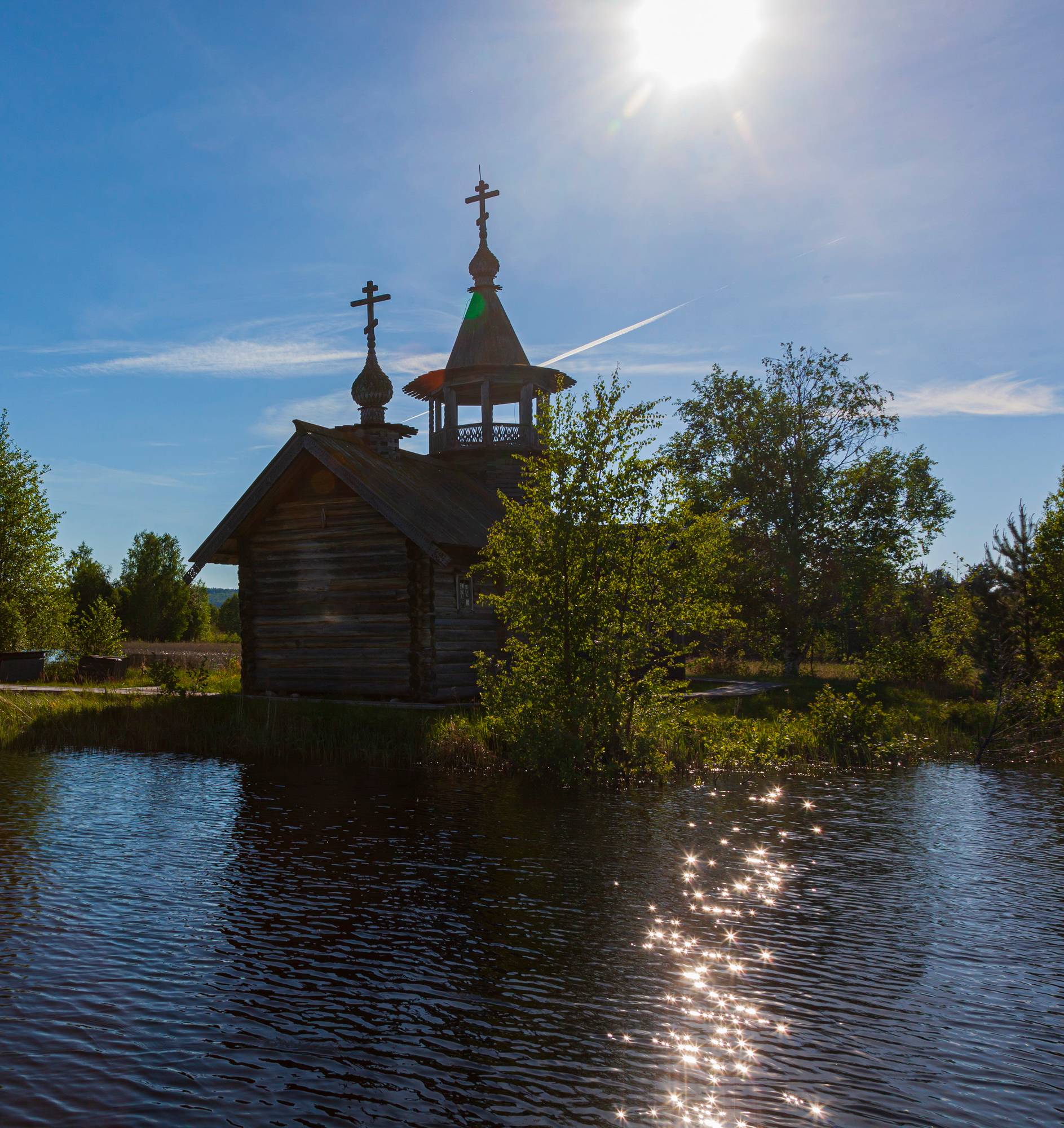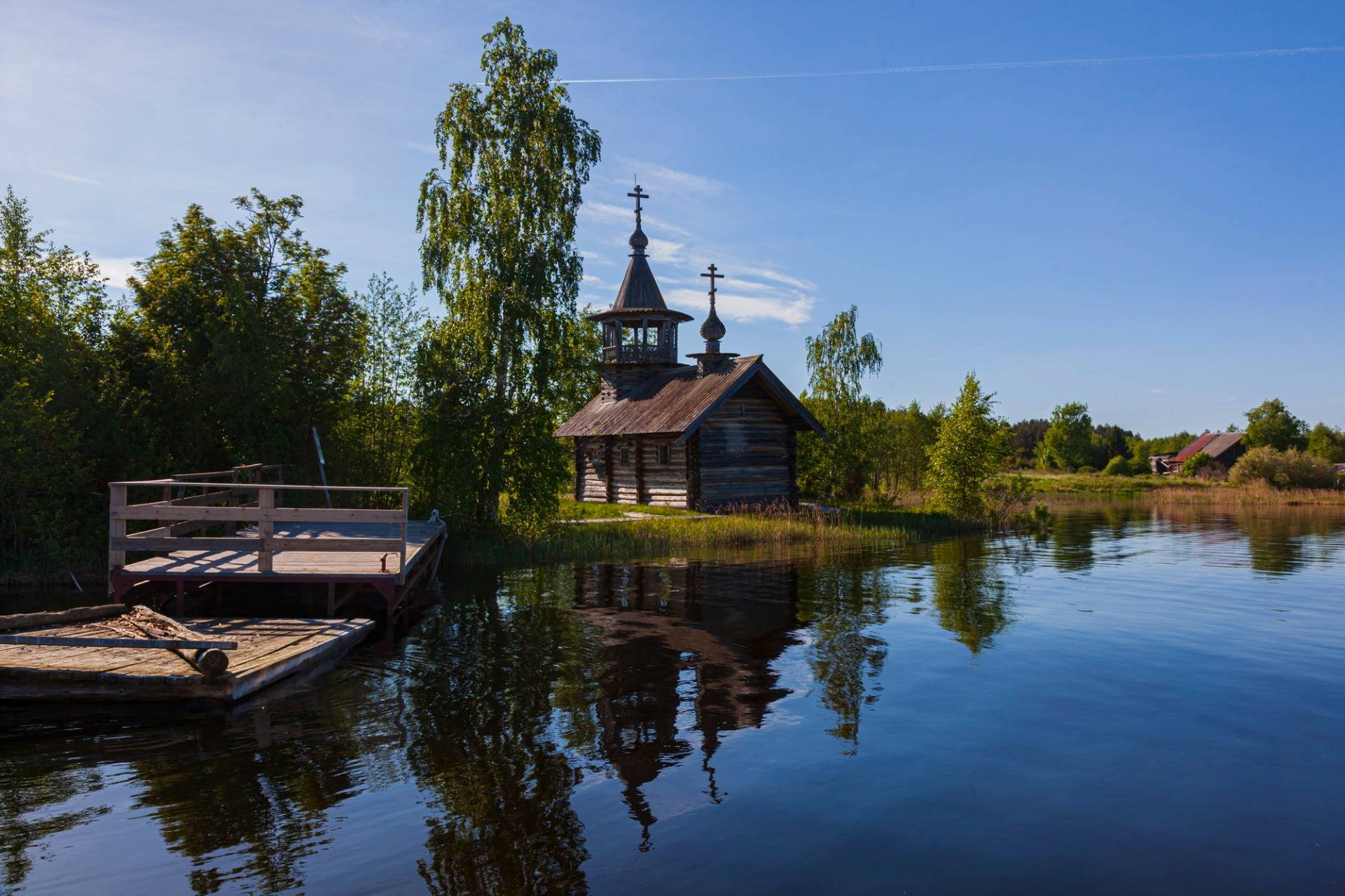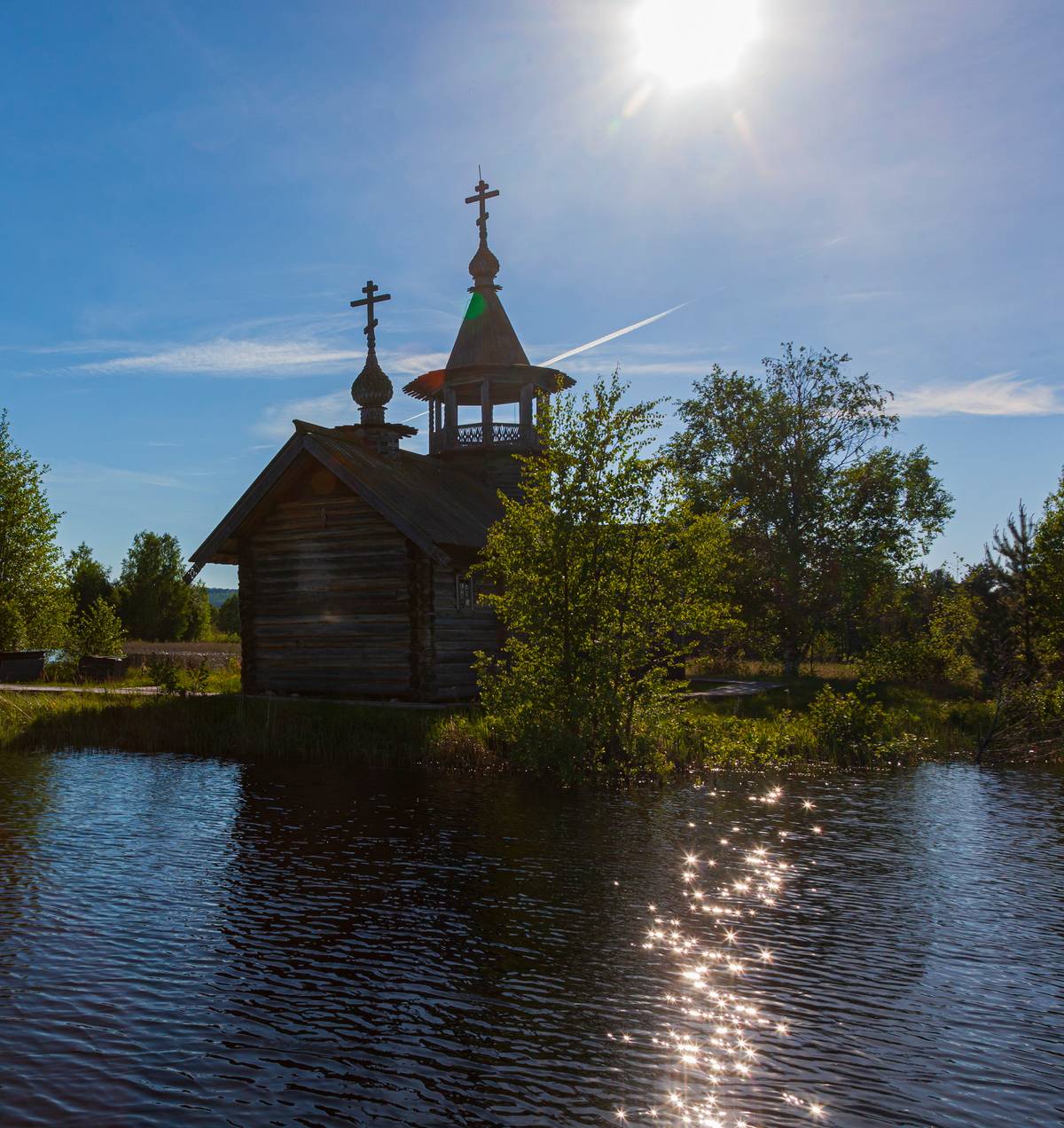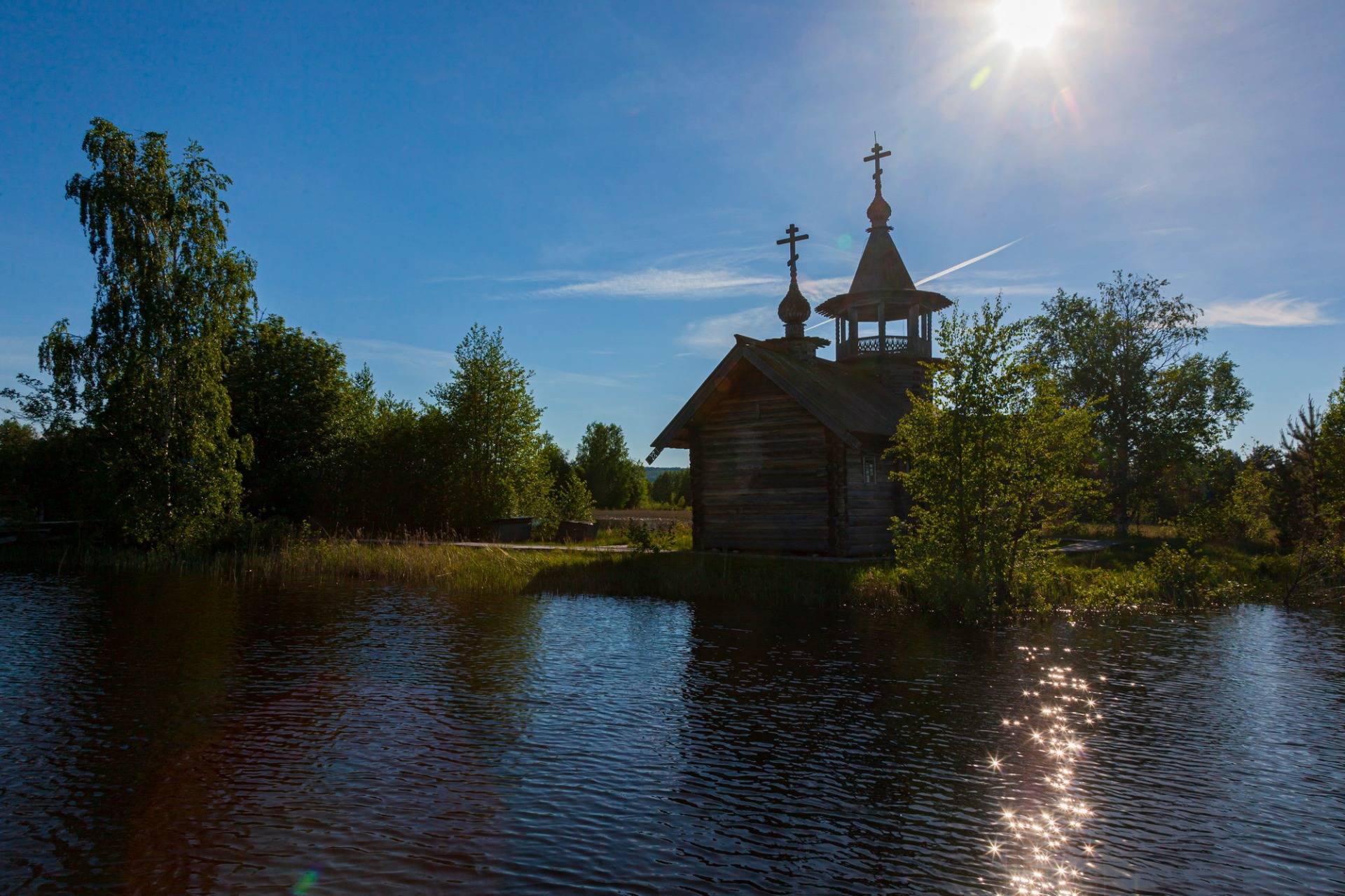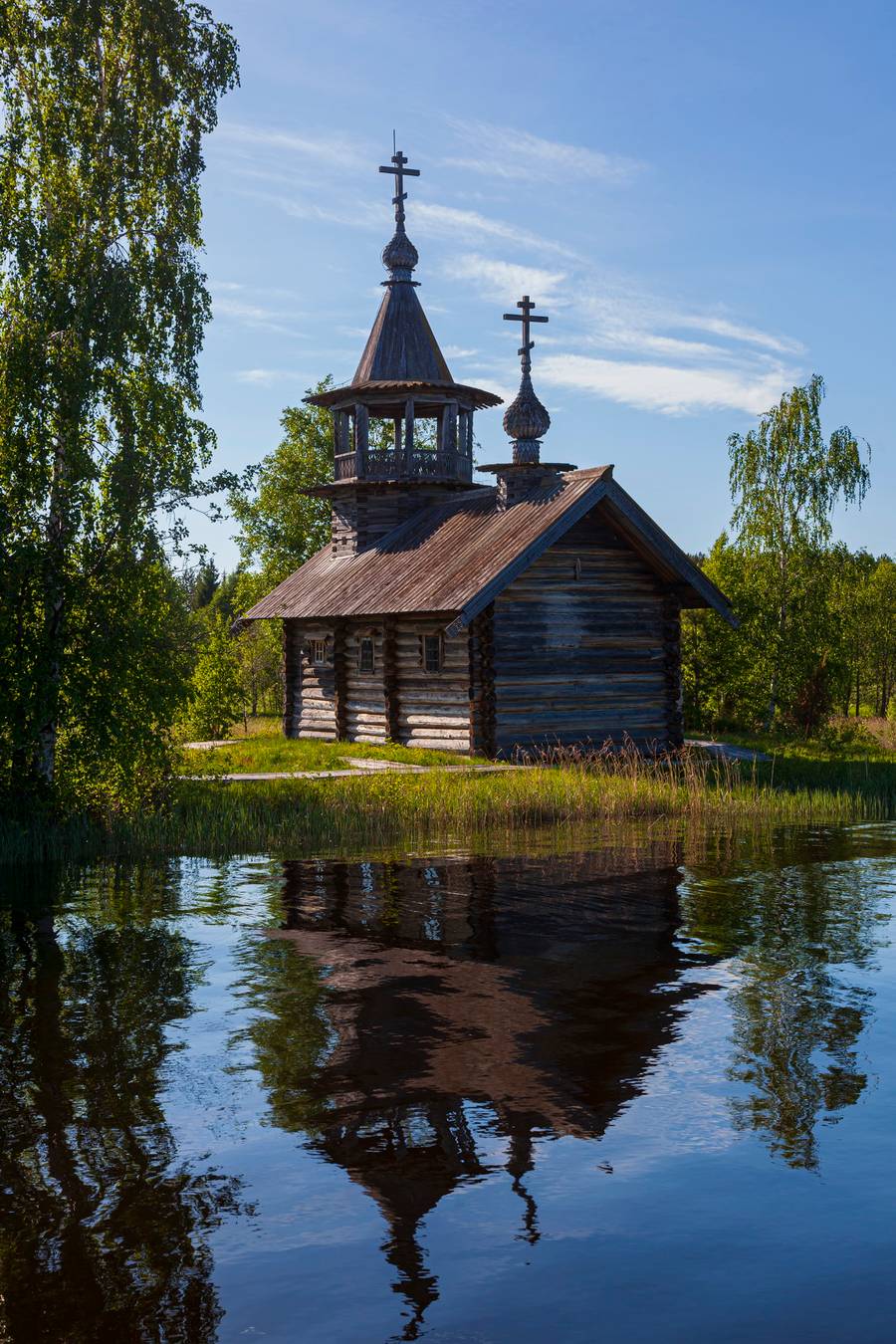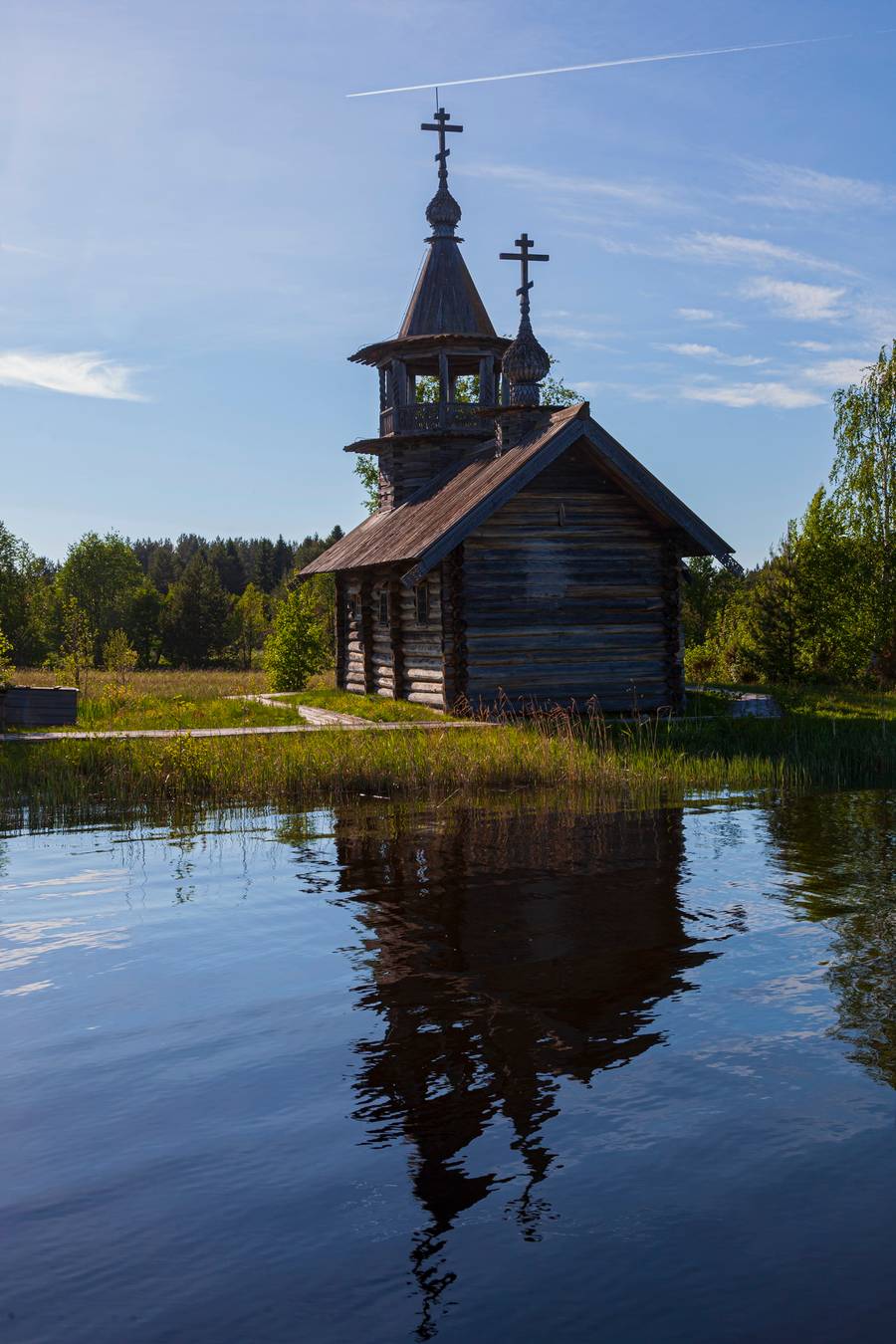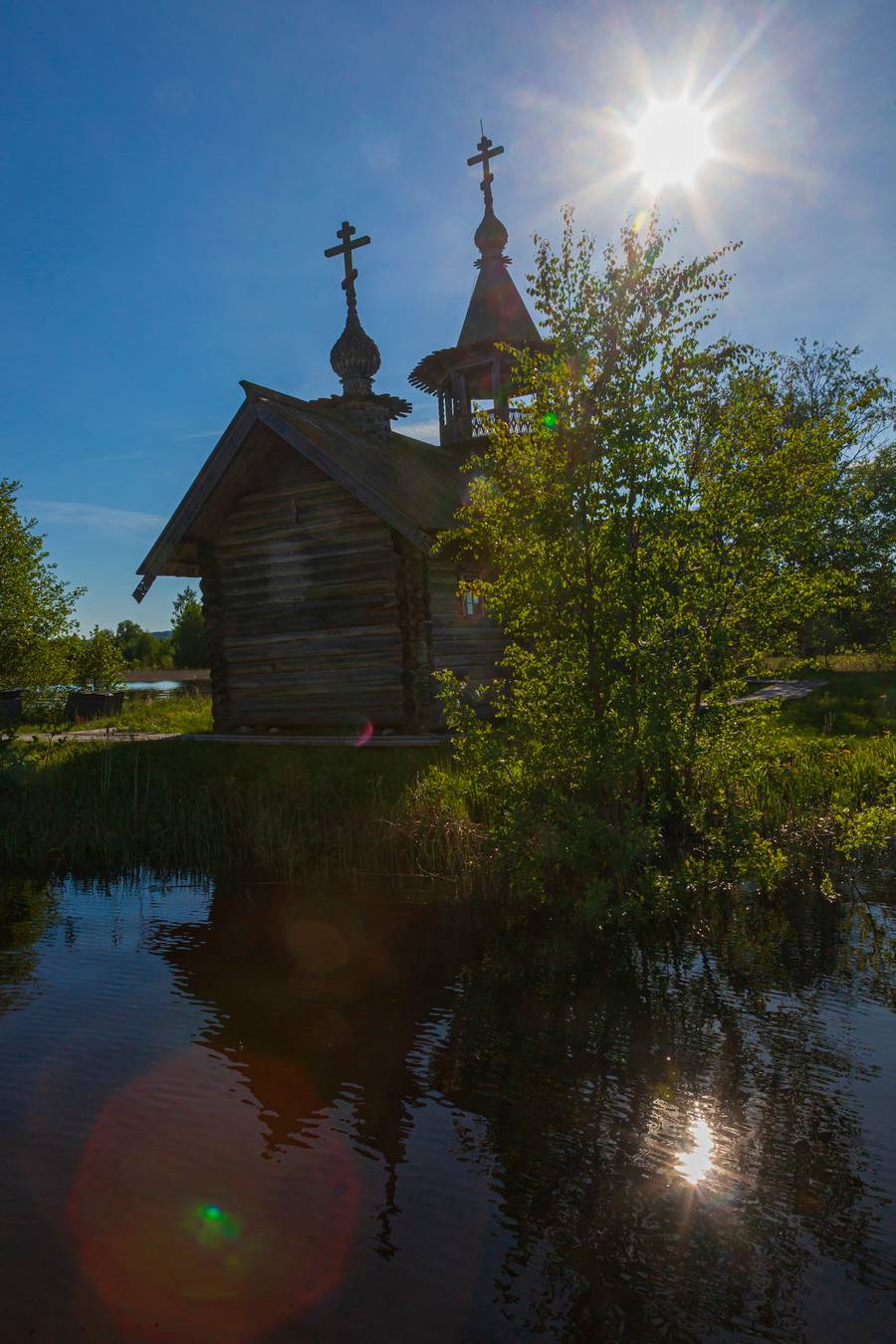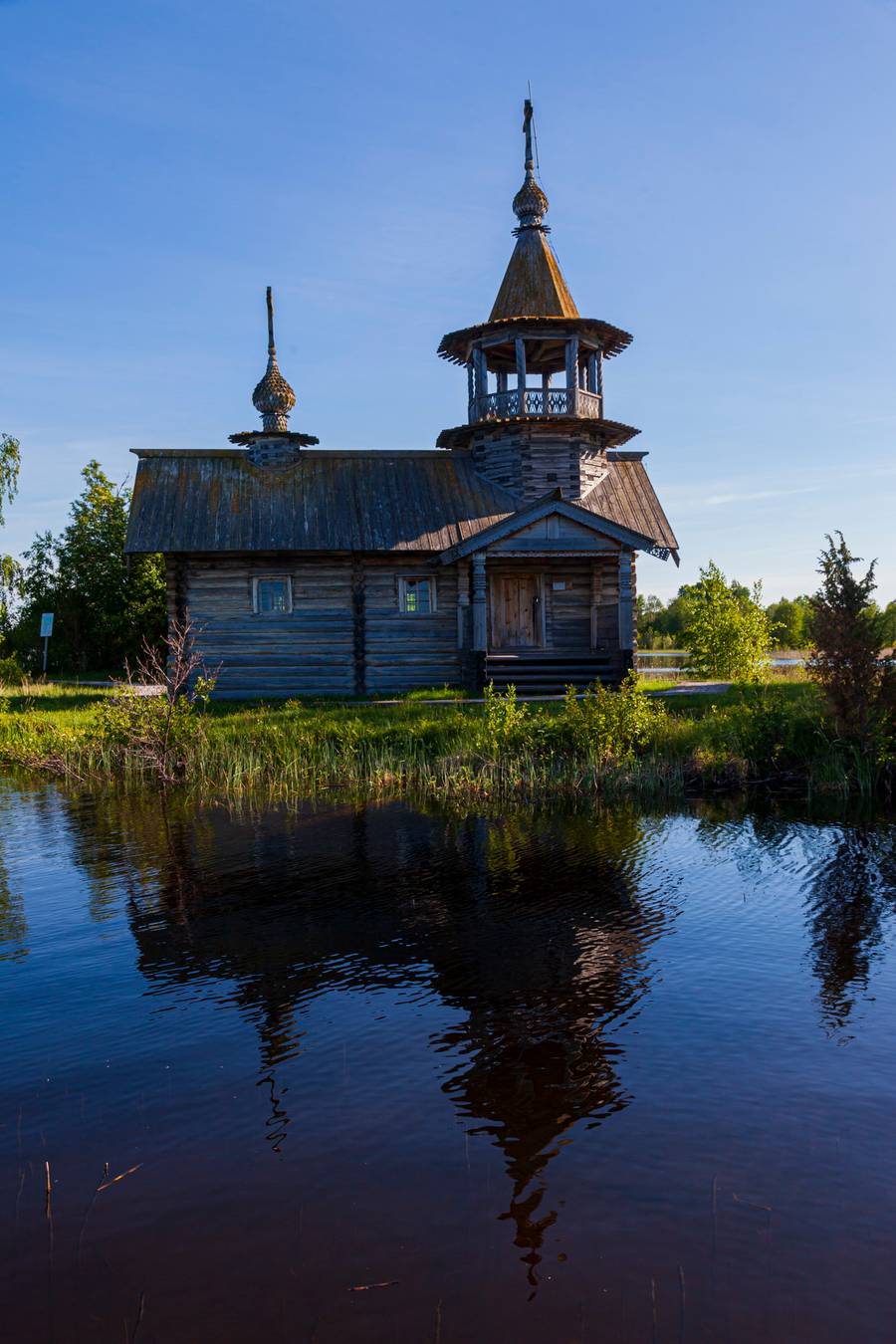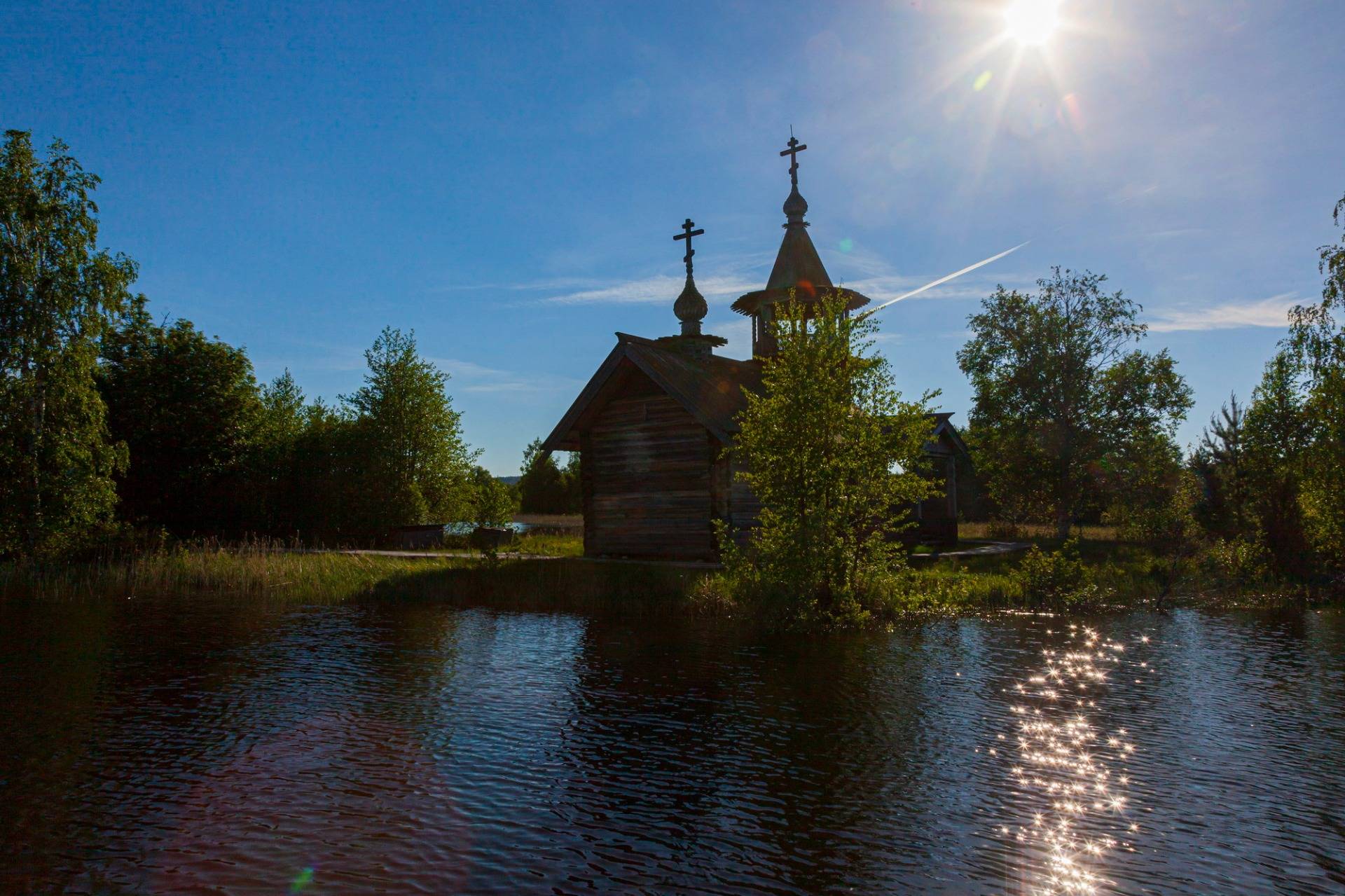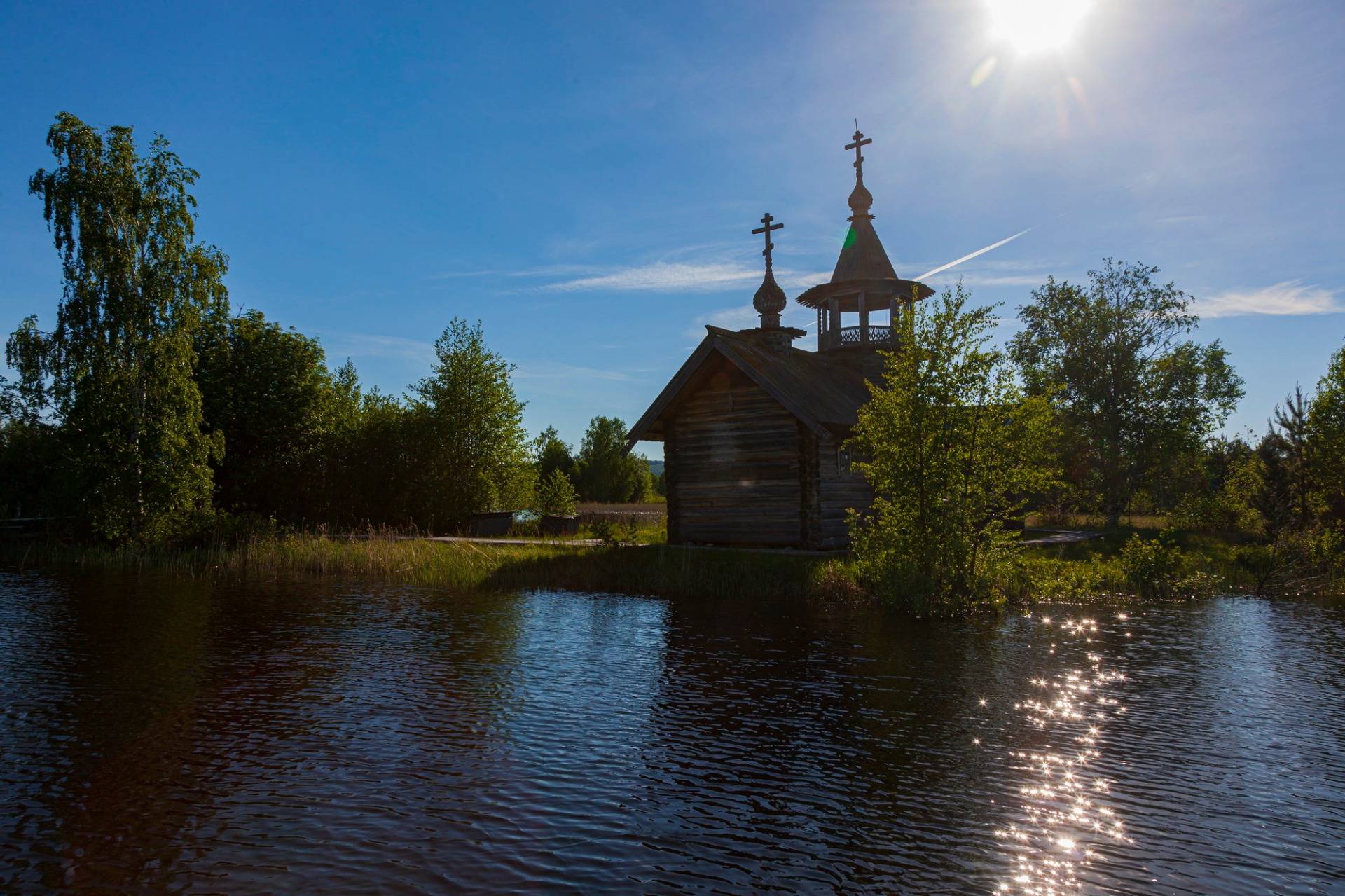The story of one chapel on an island in Lake Onega
It all started with the fact that we visited the island of Kizhi, which I already wrote about. It was a wonderful trip and we got a lot of pleasant experiences. A boatman brought us to the island. The cost of transportation was not at all small and that we would not really regret the money spent, the boatman told us different stories about these places.
When he took us away from Kizhi island, he suggested, as a bonus, to visit two more interesting chapels that were on the way from Kizhi island to the place of our base - the village of Bolshaya Guba.
We looked at two chapels. One was in a forest on the lake almost opposite the island of Kizhi. She was almost invisible from the water. The second chapel was on the island of Eglov.
Both of these chapels are the territory and property of the Kizhi Museum Reserve. Eglov Island is also a historical object, since it used to be a village with the same name. The village of Eglovo is an object of the conservation zone of the museum-reserve.
Time doesn’t really help to keep such objects away from civilization. There is no electricity and various benefits of civilization. Everything is as it was in the 18th century. And if a fire suddenly occurs in the village, then there is no place to wait for help. So it happened once. The village burned down.
But miraculously preserved chapel.
It is believed that the chapel was originally located in another village, which was located several kilometers from the island of Eglovo.
There is a legend that the residents of Eglovo won a chapel in cards from their neighbors from the village of Lipovitsy. According to another version, the chapel was transferred as a "dowry" for two brides who married the inhabitants of the village of Lipovitsy. In those parts there was a saying, "For two Darius the chapel was given."
In Russian, the name Daria and the verb "give" sound in tune and the proverb sounds in rhyme.
This chapel is named after the icon "Mother of God of All Who Sorrow is Joy." Now it is located deep in a small bay on the island of Eglov.
The mention of the village of Eglovo was first found in the “Lists of the inhabited places of the Olonets province” for 1876. In 1907–1916, there were 10 yards with 73 inhabitants in the village of Eglovo. According to 1928, the village consisted of 13 courtyards with a total population of 86 people.
There was no chapel in the village at that moment, which means that one of the versions of moving the church from the village of Lipovitsy to Eglovo looks very relevant.
In 1982, this chapel received a guard status and in 1988 was restored.
During repair and restoration work, the skin of the chapel was removed, the log house was moved, destroyed structural elements were replaced, the inner wall separating the prayer room and the refectory was restored. A nailless roof is arranged above the main log cabins; the tent of the belfry and ceilings has been restored.
The next restoration was already in 2006. The roof was changed from nailless to nail with the device supporting the outlets of the roof of the beam on the urine. The porch was completely restored from the new material - on a chopped base with a gable roof supported by carved pillars.
I give the data that I found on the Internet. This information is presented on the Kizhi Museum website. (the source )
Most likely, at the first stage a two-chamber chapel was built. The nature of the original log house - uneven and equally wide - allows you to limit the lower limit of the construction of the chapel in the middle of the XVIII century. The form of the prayer room and the one-part logging at the openings limit the upper boundary of possible dating to the middle of the XIX century. Thus, the construction time of the chapel can be attributed to a fairly wide time period - from the middle of the XVIII century. until the middle of the XIX century. To narrow this interval somewhat, it is possible to solve window openings that initially had, in all likelihood, jambs connected at the top “on the mustache”, an apex with a crest and shoulders. Taking into account the consistency of dating of the remaining signs, the chapel can be attributed to the second half of the XVIII - the first quarter of the XIX century. It is possible that at that time the chapel had windows only on the southern facade.
Later, the chapel was reconstructed - from the west were added canopies over which an octagonal bell tower was built. The main signs for dating this reconstruction were: a three-cone with the jamb at the top “in the mustache” with a crest and shoulders, a straight door to the temple below, as well as a three-cone canopy window deck with the tip resting on a quarter of the side frames. These decisions were met at a time only in the first half of the 19th century. Thus, taking into account the dating of the construction of the chapel, the reconstruction of the construction of the canopy and the bell tower can be attributed to the second quarter of the XIX century.
The third period can be dated to the end of the 19th century — the beginning of the 20th century — at that time the windows of the chapel and the refectory were reconstructed, the logs were sheathed, the nails were replaced with nails.
Dendrochronological analysis showed that the chapel’s prayer room was built of wood harvested no later than the winter of 1720/1721. Logs dating from 1699-1700 were used in the bell tower. ; 1720/1721 and the middle of the XVIII century.
The material selected at the chapel turned out to be approximately the same period of procurement, which suggests the simultaneous construction of the chapel, refectory, belfry and, possibly, its base in the form of a porch-gallery. A similar assumption about the building evolution of the chapel is made for the first time, and it is based on dendrochronology data.
A comparison of the architectural and structural and dendrochronological analyzes available today suggests that the chapel was built at the beginning of the 18th century (probably the 1720s) as a two-part with a porch-gallery and a belfry above it, and in the middle of the nineteenth century a porch-gallery converted into a narthex, the wall between the refectory and the chapel was cut out with a door being transferred to the entrance to the narthex. The next reconstruction of the chapel consisted of window shading, replacement of jambs, sheathing of the log house with tesa (presumably the end of the 11th century - the beginning of the 20th century). It is possible that a number of modifications of the chapel were carried out with the proposed transfer of this chapel from the village of Lipovitsy to the village of Eglovo. The analysis carried out in the course of the present work yielded rather unexpected results, which should be an incentive for the continuation of this work.
We sailed past this wooden miracle in the evening. Since at the beginning of summer the sun sets late in these parts, the sky was blue and the sun was shining brightly on it. In the rays of our star, a wooden temple next to the water looked fantastic.
Proportions, simplicity and grace make this work of ancient architects something unimaginably beautiful.
We slowly sailed past the temple and our carrier boat told us that the village, which was right there on the shore, burned down overnight. And he talked about how people lived here 50 years ago. And now these are wild places where only fishermen and hunters come, because there are a lot of game and fish. Of course, some houses here are used for cottages, but living here is difficult, since there are no benefits of civilization. But there are a lot of mosquitoes.
I warmly recall that trip and the boatman who told many interesting stories. His whole life is connected with Lake Onega. The lake was taken by many of his friends and relatives who, without due respect, belonged to this beautiful but harsh region.
From that trip I brought a lot of photos that I take apart and study from time to time. I learn a lot of new and interesting things.
I am glad if you learn something new.

Ready to Blog & Earn?
With TravelFeed, easily start your own travel blog and earn as you go. It's the smart platform for travelers who want to profit from their passion. Create a free account

My related stories:
Travel Resources for your trip to Russia
Recommended by TravelFeed
Flights: We recommend checking Kiwi.com to find the best and cheapest flights to Russia.
Accomodation: Explore the best places to stay in Russia on Booking.com, Agoda and Hostelworld.
Car Rental: For hassle-free car hiring, DiscoverCars is our trusted choice with a wide selection of vehicles.
Internet: Got an eSIM compatible phone? Airalo is perfect for reliable internet access during your trip. Just install it before you go, and you're set!
Day Trips & Tours: We recommend GetYourGuide for a variety of well-organized and enjoyable activities.
Travel Planner: Need a hand planning? Our free travel planner chatbot is your personal guide to Russia. Chat now.
Disclosure: Posts on TravelFeed may contain affiliate links. See affiliate disclosure.
